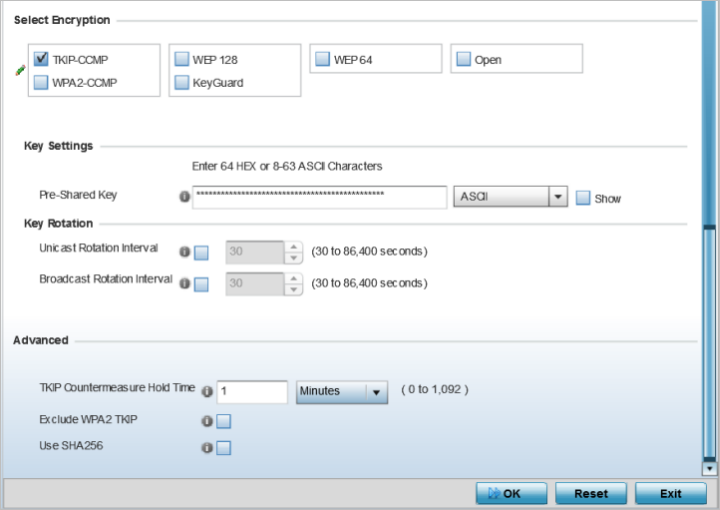TKIP-CCMP
About this task
The encryption method is TKIP (Temporal Key Integrity Protocol). TKIP addresses WEP's weaknesses with a re-keying mechanism, a per-packet mixing function, a message integrity check and an extended initialization vector. However, TKIP also has vulnerabilities.
CCMP is a security standard used by the AES (Advanced Encryption Standard). AES serves the same function TKIP does for WPA-TKIP. CCMP computes a MIC (Message Integrity Check) using the proven CBC (Cipher Block Chaining) technique. Changing just one bit in a message produces a totally different result.
To configure TKIP-CCMP encryption on a WLAN:
Procedure
What to do next
- Enable TKIP for legacy device support only when WPA2-CCMP support is not available.
- Although TKIP offers better security than WEP, it can be vulnerable to certain attacks.
- When both TKIP and CCMP are enabled, a mix of clients are allowed to associate with the WLAN. Some use TKIP, others use CCMP. Because broadcast traffic needs to be understood by all clients, the broadcast encryption type in this scenario is TKIP.




